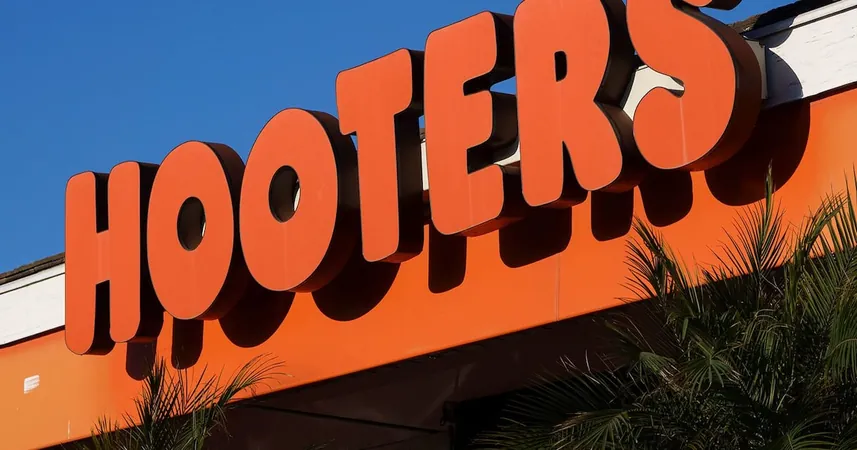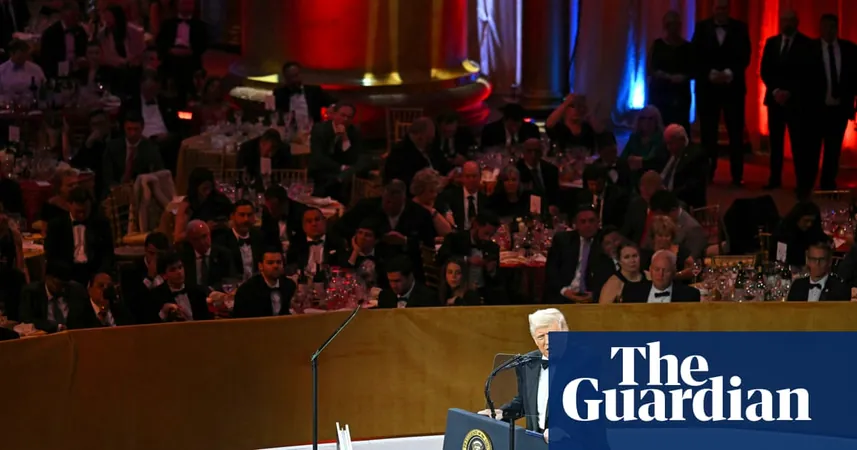
The Battle of Promises: A Comprehensive Analysis of Canada’s Major Political Parties Ahead of the Upcoming Election
2025-04-02
Author: Emily
Climate Action: Promises and Contradictions
Liberals: The Liberal Party has proposed significant changes to its climate strategy. While they are focused on investment in clean energy through a $20 million boost for hydroelectric projects in Nunavut, they also plan to tighten regulations on industrial carbon emissions. Notably, they have committed to phasing out fossil fuel use in government buildings by 2030. However, their plan includes allowances for pipeline construction, which raises eyebrows among environmentalists.
Conservatives: The Conservative Party takes a starkly different approach, vowing to dismantle all carbon pricing schemes, including those affecting industrial emitters. They emphasize support for fossil fuel projects, including LNG pipelines, and even propose expanding the oil export capabilities from the Port of Churchill. Critics argue this could set back efforts to combat climate change.
NDP: Advocating for a balance, the NDP expresses support for maintaining an industrial carbon price while vowing to eliminate $18 billion in subsidies to oil and gas sectors. Their proposals include introducing border carbon adjustments but they have firmly positioned themselves against the expansion of pipelines, especially in Quebec.
Bloc Québécois: The Bloc puts a spotlight on Quebec's autonomy by opposing pipelines in the province, bolstering support for a border carbon adjustment, and pushing for a hefty increase in federal funding for climate adaptation initiatives.
Greens: The Green Party proposes ambitious goals, including a commitment to a Guaranteed Livable Income and a call for public housing initiatives. While they pledge to prioritize climate action, they, too, have faced criticism for how feasible their bold initiatives truly are.
Economic Policies: Who Benefits?
Liberals: The party aims to cut income tax for the lowest bracket and ease access to employment insurance. They are investing heavily in affordable housing initiatives but have left questions surrounding potential funding sources unanswered.
Conservatives: They propose substantial tax cuts and financial incentives for seniors and businesses. However, their plans suggest a significant reduction in foreign aid, redirecting funds to military enhancement.
NDP: The party’s economic framework focuses on increasing untaxed income limits, introducing a $10-a-day childcare initiative, and significantly expanding support for healthcare.
Bloc Québécois: They are pushing for enhanced GST rebates for first-time homebuyers, reflecting their focus on addressing housing affordability in Quebec.
Greens: Focusing on a sustainable economic model, they promise to halt corporate purchases of single-family homes, aiming for long-term affordability.
Foreign Policy: Canada’s Role on the Global Stage
Liberals: They aim to increase NATO spending and protect Arctic sovereignty, investing substantially in national defense. However, questions arise regarding their strategy in balancing military spending with social programs.
Conservatives: The party promises to bolster military funding, supporting Ukraine amid ongoing conflict and aiming to sell Canadian oil as part of humanitarian aid efforts.
NDP: They propose considerable aid improvements, allocating 0.7% of GDP toward international assistance and pledging to solidify Canada’s role in UN peacekeeping missions.
Bloc Québécois: They emphasize partnerships with French-speaking nations and propose a substantial increase in foreign aid to counteract cuts from the U.S. administration.
Greens: Their foreign policy focuses on human rights, advocating suspensions on arms sales to nations violating human rights while endorsing global cooperation.
Immigration Policies: A Hot-Button Issue
Liberals: The party seeks to manage immigration levels in conjunction with local capacities, pledging to establish a Fair Mile Fund to develop transportation networks for new immigrants.
Conservatives: They promise to cap the asylum seeker influx and aim for stricter oversight of temporary workers, reflecting a desire to tighten immigration controls.
NDP: They advocate for a progressive immigration policy, ensuring that asylum claims are processed efficiently while extending protections to targeted groups from the U.S.
Bloc Québécois: They wish to decrease immigration levels, advocating for a fair approach in distributing newcomers among provinces.
Greens: They are targeting ethical immigration reforms, calling for a halt on non-permanent residents until the housing crisis is under control.
Conclusion: The Stakes Have Never Been Higher
The stakes surrounding the upcoming election are monumental, with implications touching on every aspect of Canadian life, from environmental sustainability to economic stability and international relations. As Canadians prepare to cast their ballots, the clear distinctions in party promises articulate a larger conversation about the country’s future direction. Will voters prioritize aggressive climate policies, economic stability, or international solidarity? The choice lies with the people, and their decision will shape Canada’s path moving forward. Buckle up for what promises to be an electrifying election season!









 Brasil (PT)
Brasil (PT)
 Canada (EN)
Canada (EN)
 Chile (ES)
Chile (ES)
 Česko (CS)
Česko (CS)
 대한민국 (KO)
대한민국 (KO)
 España (ES)
España (ES)
 France (FR)
France (FR)
 Hong Kong (EN)
Hong Kong (EN)
 Italia (IT)
Italia (IT)
 日本 (JA)
日本 (JA)
 Magyarország (HU)
Magyarország (HU)
 Norge (NO)
Norge (NO)
 Polska (PL)
Polska (PL)
 Schweiz (DE)
Schweiz (DE)
 Singapore (EN)
Singapore (EN)
 Sverige (SV)
Sverige (SV)
 Suomi (FI)
Suomi (FI)
 Türkiye (TR)
Türkiye (TR)
 الإمارات العربية المتحدة (AR)
الإمارات العربية المتحدة (AR)